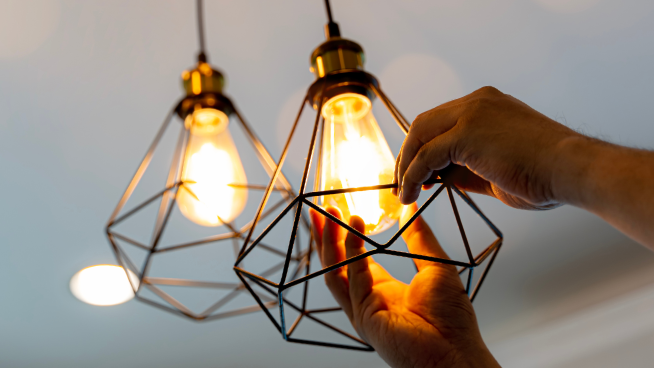
From The Detroit News | By Ken Calverley and Chuck Breidenstein
DETROIT, August 10, 2023 ~ We would have gotten there anyway.
When the government tried to ban the production of incandescent lights a decade ago, there was a huge uproar, and for good reason.
At the time there was really no viable, affordable, alternative to our beloved light bulbs.
The new energy efficient bulbs were pricey and confusing, and we all thought we would have to replace our fixtures to accommodate them.
Television shows featured story lines with imaginary black markets for 60- and 100-watt incandescent bulbs.
The popular alternative bulb at the time was a compact fluorescent, CFL, and its price point was such that guests in hotels were actually stealing the bulbs from fixtures to take home.
PODCAST:
August 6, 2023 ~ Chuck “The Inside Guy” Breidenstein and Ken “The Outside Guy” Calverly offer the knowledge and resources you need to make the home of your dreams a reality. Catch them every Saturday and Sunday from 10 a.m. to noon on 760 WJR.
(CONTINUED)
On the product horizon was the LED, Light Emitting Diode, which was a costly choice that also threatened to demand specialized fixtures.
What a difference a few years can make.
According to the Energy Information Administration, EIA, there has been a tenfold increase in LED purchase and use in the five-year span between 2015 and 2020, from 4% percent to nearly 47% as the bulbs became affordable and readily adaptable to existing fixtures.
As should happen, the product evolution and market demand drove the change.
Consumers somewhat quickly have adapted to shopping for the “wattage equivalent” in LED bulbs since the new bulb uses far less power, up to ninety percent less, than the old types we grew up with.
What has happened rather quietly is that the Department of Energy, DOE, has initiated federal energy efficiency regulations effective Aug. 1 of this year that effectively ban the production and importation of energy gulpers like incandescent and halogen bulbs.
It is, perhaps, a subtle irony that for years we rated the old bulbs in terms of their energy consumption, watts, rather than their light emitting capability, lumens.
On LED packaging you will not only see comparison of watts, where the 100-watt incandescent is replaced by an LED that requires 14 fourteen to 22 watts of power, but of light generating capacity; in this case 1,600 lumens for a 100-watt equivalent.
Despite the politics involved in this issue, there is no denying the huge leap forward in energy efficiency. Most of the electricity consumed by the old bulbs was converted to heat, up to 95% of it, as exemplified by the temperature of a large wattage bulb that had been lit for an hour.
That intense heat also shortened the life of the bulbs, compounding the issue of cost efficiency over time.
Other differences between the two include the benefit of omnidirectional light by the old bulbs, whereas LED’s emit light in a single direction requiring multiple cells per bulb for most applications.
But technological advances have engendered inexpensive mass production of the LED bulbs not only as omnidirectional lighting spheres for the bedroom reading lamp, but in a virtually limitless palette of color variation from full spectrum grow lights mimicking the sun to warm orange and cold white.
The new bulbs are available in dimming varieties, exterior floods and various types of programmable ropes for creating ever-changing ambiance in everything from kitchen under-cabinet installs to exterior overhang attachment to bathe your home in holiday lighting de jour.
The bulbs operate on direct current, which is created by an internal device that acts like a transformer called a driver.
We get to keep our AC fixtures in place as the bulb itself converts the electricity.
LED bulbs meant to retrofit to standard socket AC light fixtures will have an internal driver. Fixtures intended for LED use will have separate drivers that likely will do a better job of current conversion and keep internal temperatures lower for prolonged bulb life and greater efficiency.
So, all is right with the world. New buildings will be designed with LED fixtures while existing structures and fixtures can readily accommodate the new bulbs. No black market needed.
Sometimes, all we need is a little time and technology to inspire positive change.
For all your housing information needs visit InsideOutsideGuys.com
**
Let the guys help you start planning today for the hot summer ahead.
For housing advice and more, listen to “The Inside Outside Guys” every Saturday and Sunday on 760 WJR from 10 a.m. to noon, or contact them at InsideOutsideGuys.com.





